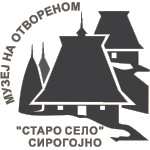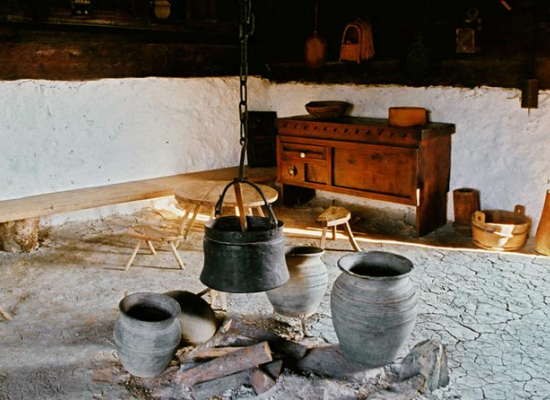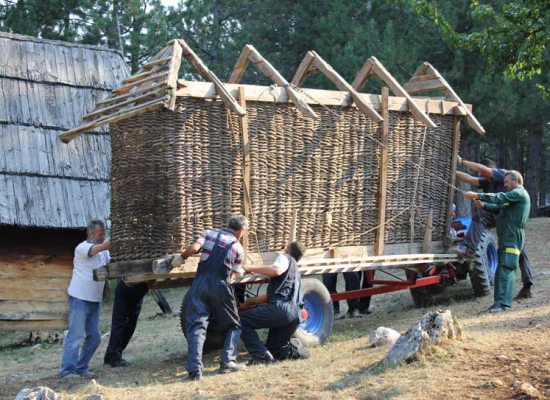Building skills and interior facilitation, as well as the way of organizing business and family life of people in the hilly - mountainous areas of the Dinar region are presented in 55 buildings (of which 32 are in permanent museum exhibition) which are relocated from mt Zlatibor’s villages.
The process of transfer, setting-up and reconstruction of Zlatibor log cabins in the "Old Village" was initiated by architect Ranko Findrik and the Republic Institute for Protection of Cultural Heritage in 1980. The initiative came from the organization of handicrafts from Sirogojno and realized by the persistence of Mrs. Dobrila Vasiljević – Smiljanić, engaging of the ethnologist, Mrs. Bosa Rosić, competent national institutions and numerous collaborators.
Within the protected whole, for further storage and presentation, the institution of the Open-air Museum was constituted in 1992; it performs its activities in accordance with the provisions of the ICOM Declaration and the basic principles of European skansenology.
Memorial complex of the Holy Apostles Peter and Paul Church from the eighteenth century and the open-air museum, in 1983., has been legally protected as cultural heritage - cultural monument of exceptional importance.
The Commission formed by the Government of Republic of Serbia and the National Council for Culture recognized the importance of the work this institution is engaged with and in 2013, the Museum was declared a cultural institution of national importance for Republic of Serbia. In order to continue thorough efforts in cultural heritage preservation and fostering the Museum received a special jury award of the European Unionin the field of cultural heritage 2012,in the category of education and awareness raising, for the project “Houses of Zlatibor from the nineteenth century up to the present.”











